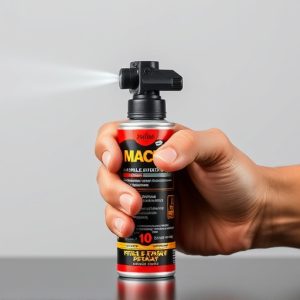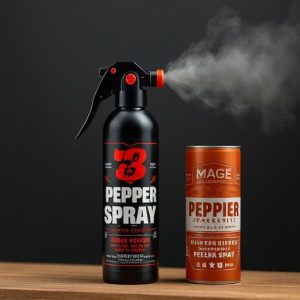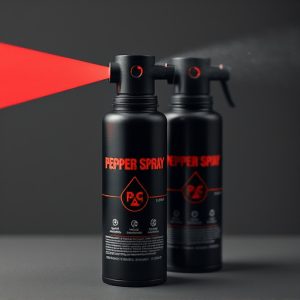Mace vs Triple Action Pepper Spray: Unveiling Key Differences
Mace and triple action pepper spray differ in composition and effect. Mace primarily uses capsaicin…….
Mace and triple action pepper spray differ in composition and effect. Mace primarily uses capsaicin for temporary blindness, while triple action adds citric acid, a wetting agent, and enhanced chemicals for faster, more powerful disorientation. Triple action is ideal for close combat and high-risk environments, while mace suits broader personal protection and non-lethal law enforcement use. Both have varying legalities; always check local regulations. Choose based on your specific needs: triple action for comprehensive defense or mace for temporary but broad disorientation.
Looking for the best self-defense option between Mace and Triple Action pepper spray? This comprehensive guide breaks down their key differences. We delve into the chemical compositions, their respective strengths in various applications, legal considerations, and crucial factors to help you make an informed choice. Understand the pros and cons of each to empower yourself with effective protection.
Understanding Mace and Triple Action Pepper Spray: A Comparative Analysis
Mace and triple action pepper spray are both popular self-defense tools, but they differ significantly in their composition and effects. Mace, a brand name for a type of pepper spray, is typically made with capsaicin, the active ingredient found in chili peppers. This compound irritates the eyes, nose, and respiratory system, causing temporary blindness and difficulty breathing.
Triple action pepper spray, on the other hand, goes beyond simply containing capsaicin. It incorporates an additional two ingredients: citric acid and a wetting agent. The citric acid enhances the burning sensation and can disrupt the body’s natural pH balance, while the wetting agent ensures the spray sticks to targets, increasing its effectiveness over a longer period. This multi-pronged approach makes triple action pepper spray a more robust option for personal safety compared to traditional mace.
Active Ingredients and Their Effects: Unveiling the Chemical Composition
Both mace and triple action pepper spray rely on capsaicin, the active ingredient responsible for their fiery effects. However, the “triple action” in its name suggests a more complex formula. While standard pepper spray targets eyes and respiratory systems with capsaicin alone, triple action formulations incorporate additional chemicals to enhance their impact. These might include agents that increase pain sensitivity or prolong the spray’s effectiveness.
Mace, on the other hand, often contains a broader range of ingredients beyond capsaicin. Manufacturers may include substances like chloroacetophenone and oleoresin capsicum, enhancing its ability to disrupt vision, breathing, and movement. Comparing these two, triple action pepper spray tends to offer a more diverse chemical assault, aiming for comprehensive disorientation, while mace focuses on a slightly narrower but potent spectrum of effects.
Applications and Use Cases: Where Each stands Strong
Mace and triple action pepper spray both serve as essential personal safety tools, each with unique advantages in various applications. Mace, known for its wide range and less intense effects, is often preferred for self-defense against aggressive dogs or to create distance from potential threats. Its non-lethal nature makes it suitable for law enforcement agencies as well.
On the other hand, triple action pepper spray offers a more concentrated dose of capsaicin, providing faster and more powerful protection. This type of spray is ideal for close-quarters combat, such as in self-defense against armed assailants or during physical altercations. Its three-pronged approach—desensitizing the eyes, obstructing visibility, and causing temporary pain—makes it a formidable tool for those in high-risk environments or situations requiring swift immobilization.
Safety Considerations and Regulations: Legal Implications to Keep in Mind
When considering carrying pepper spray for self-defense, understanding safety considerations and legal regulations is paramount. Both Mace and triple action pepper sprays have distinct uses and rules that differ by location. It’s crucial to know that many areas have specific laws governing the type, quantity, and use of pepper spray, with restrictions on who can possess and carry it.
For instance, some regions classify pepper spray as a weapon, subject to stricter controls, while others may allow its use for personal protection under certain circumstances. Users must also be aware that misuse or unauthorized possession can result in severe legal consequences, including fines and imprisonment. Always check local laws and consider consulting with law enforcement or legal experts to ensure compliance.
Choosing Between Mace and Triple Action: Factors That Will Guide Your Decision
When deciding between Mace and triple action pepper spray, several factors come into play. Firstly, consider the level of protection needed. Triple action sprays are designed to provide a more comprehensive defense by targeting the eyes, nose, and respiratory system simultaneously. This makes them ideal for high-risk situations or outdoor activities where you might face aggressive animals or hostile individuals.
On the other hand, Mace typically offers a slightly different approach, focusing on blinding and disorienting the attacker temporarily. It’s generally considered more user-friendly, making it suitable for personal protection against unexpected assaults in close quarters. The choice ultimately depends on your specific needs, whether you prioritize broader defense or ease of use.


